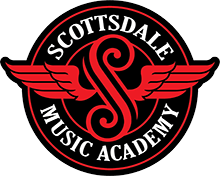 To call yourself a true master of the ebony and ivory keys of a keyboard or piano, you must possess a certain set of skills. Top among that list of skills are things like the ability to keep time, a basic understanding of music theory, and a knack for sight reading. But, one essential trait that’s often overlooked by both beginners and more seasoned players is that of strength. Now I know that strength is not typically an attribute that’s associated with keyboard players, but, believe it or not, strength (or a lack thereof) plays a huge role in a keyboard player’s success or failure.
To call yourself a true master of the ebony and ivory keys of a keyboard or piano, you must possess a certain set of skills. Top among that list of skills are things like the ability to keep time, a basic understanding of music theory, and a knack for sight reading. But, one essential trait that’s often overlooked by both beginners and more seasoned players is that of strength. Now I know that strength is not typically an attribute that’s associated with keyboard players, but, believe it or not, strength (or a lack thereof) plays a huge role in a keyboard player’s success or failure.
Before all of you keyboard enthusiasts start breaking out the weights or bringing dumbbells with you to your upcoming keyboard lessons in Scottsdale, let me clarify by saying that the only strength that matters when it comes to keyboard playing is the one that rests in your fingers, not your biceps. Having good finger strength and dexterity will prevent your fingers from cramping up during a long piece and will allow you to create more variations of sound when you’re playing, since you’ll have better control over your finger movements.
To develop fingers with Hulk-like strength and Spiderman-like agility, set down the dumbbells, step off of the treadmill, and simply follow the tips below instead.
Incorporate Stretches
In keyboard playing terms, finger strength doesn’t simply refer to the power or force of the fingers. Strong and healthy piano-playing fingers should also be ones that are flexible and capable of spanning large distances. While stretching before playing is always recommended, regular finger stretching should also be an exercise in and of itself. To help strengthen your finger movements and span larger intervals on the piano, try stretching your fingers on a consistent basis. Spend a few minutes a day spreading your fingers nice and wide on the keyboard while also incorporating pieces during your keyboard lessons in Scottsdale in which octaves, ninths, and tenths occur in order to keep your fingers loose and limber and ready for action.
Return to the Basics (i.e. Scales)
While scales may seem rudimentary, they’re essential for developing finger strength and increasing muscle control. To strengthen your fingers, give them daily exercise by playing both major, minor, and chromatic scales (as well as arpeggios) in a variety of different musical styles and tempos, such as legato, staccato, and with an inverted style of playing. Be sure to practice scales both single-handed and together to get the maximum benefits. Practicing your scales with such diversity will help your fingers build up their endurance and increase muscle memory.
Mix It Up
Doing the same thing over and over again is not only boring, it makes you stagnant and prevents you from fully developing your skills. Just like bodybuilders must vary their exercises to keep their bodies challenged and prevent themselves from hitting a plateau, so, too, must keyboard players vary their musical repertoire. Mixing up the genre of music you play can help work different muscles of your fingers and thus, help strengthen their overall performance. The fingering techniques needed to play classical music are different from those needed to play jazz, country, or pop and vice-versa. Spicing up your musical selection will only help round out your fingering skills.
Build Superhuman Fingers Through Keyboard Lessons in Scottsdale
Remember, building strong and nimble fingers won’t happen overnight, but it can be done with a little time, effort and patience. Once you whip those weak fingers into shape, you’ll be amazed at your improvement as a keyboard player.
For help developing superhuman fingers and out-of-this-world keyboard playing skills, sign up for keyboard lessons by Scottsdale Music Academy. We promise no weightlifting, workout gear or sweating is required!
